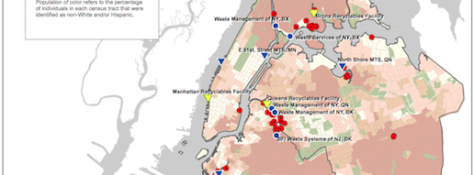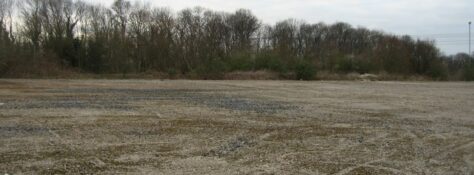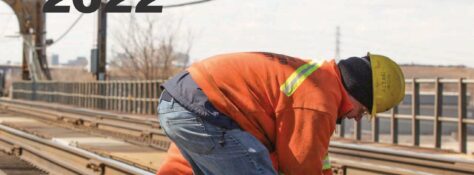Black, Indigenous, and People of Color (BIPOC) communities are continuously burdened by the cumulative impacts of multiple hazardous environmental facilities being placed in their communities. Historically, minority communities and economically distressed communities have borne a disproportionate and inequitable share of environmental facilities such as landfills, waste transfer stations, and fossil fuel power plants. These industrial facilities cause significant health impacts such as asthma, lung and heart disease, increased birth defects, and learning impairments. The negative health impacts of poor air quality, polluted waters, toxic gasses, and more are exacerbated in these communities as a result of the cumulative burden of multiple sites. This bill addresses a fundamental issue of environmental racism, that communities of color should not have all the environmental hazardous facilities sited in their neighborhoods.
Learn MoreOn January 26, NYLCV participated in Lead-Free Kids NY’s advocacy day. Lead-Free kids is a statewide coalition working to end New York’s childhood lead exposure crisis through advocating for state level policy solutions. While lead paint was banned in the United States in 1978, the old housing stock in New York leaves our citizens vulnerable to lead exposure. Because the current corrective policies have left loopholes for landlords to escape testing and renovation, many New York children have unknowingly been exposed to lead. Lead exposure puts our youngest New Yorkers at risk of their health as well as their learning and behavioral milestones being stunted. With that in mind, the day’s agenda consisted of both policy priorities and a bold $1 Billion budget to ensure no New York resident will have their health compromised by lead exposure.
Learn MoreWhen it comes to combating climate change, we’ve been taught to prioritize the three R’s: reduce, reuse, and recycle. But figuring out the best way to do this can be confusing and difficult to navigate when the burden is placed on individuals. Extended producer responsibility (EPR), most recently proposed in Governor Hochul’s upcoming budget, seeks to take that pressure off of individuals and put it back on the producers of the goods we consume.
Learn MoreNYLCV/NYLCVEF is thrilled to announce the joint venture team of Ørsted and Eversource as our 2022 honorees. We are delighted to recognize the companies’ leadership in the renewable energy space and look forward to continuing to partner with them to make New York a greener state.
Learn MoreWhile industrialization drove New York’s economy in the 20th century, many of the harsh chemicals and pollutants involved in industrial processes had a negative impact on the environment around industrial sites. These brownfields, leftover property where redevelopment is difficult due to the presence of contaminants, are located all over New York. New York State’s Brownfield Cleanup Program (BCP), last reauthorized in 2015, is set to expire this year. This program facilitates brownfield cleanup initiatives in order to redevelop the property and encourage economic development.
Learn MoreIn the fight against climate change, carbon sinks play a vital role in reducing the amount of greenhouse gasses in the atmosphere. These sinks, such as forests and wetlands, also host a variety of biodiversity, providing the foundation on which the climate can heal and recover. However, over 60 percent of New York State’s wetlands have been lost due to human development, according to the Environmental Protection Agency, putting already-fragile ecosystems at risk as greenhouse gasses are released into the atmosphere.
Learn MoreNYLCV has partnered with the Alliance for Clean Energy and several other environmental and industry stakeholders to push for the Governor to include legislation that allows for the direct sales of electric vehicles in her 30-day budget amendments.
Learn MoreThe state legislative session has officially commenced! Our elected state representatives have the opportunity to get bold and progressive legislation passed that will protect generations of New Yorkers from adverse public health impacts and climate change. Our agenda specifically highlights environmental justice priorities that ensure equitable distribution of resources to communities that have been historically under-resourced and underserved while on the frontlines of climate related impact. We will be advocating for our top priorities, released earlier this month in our New York State Policy Agenda. Below are the main highlights.
Learn More



